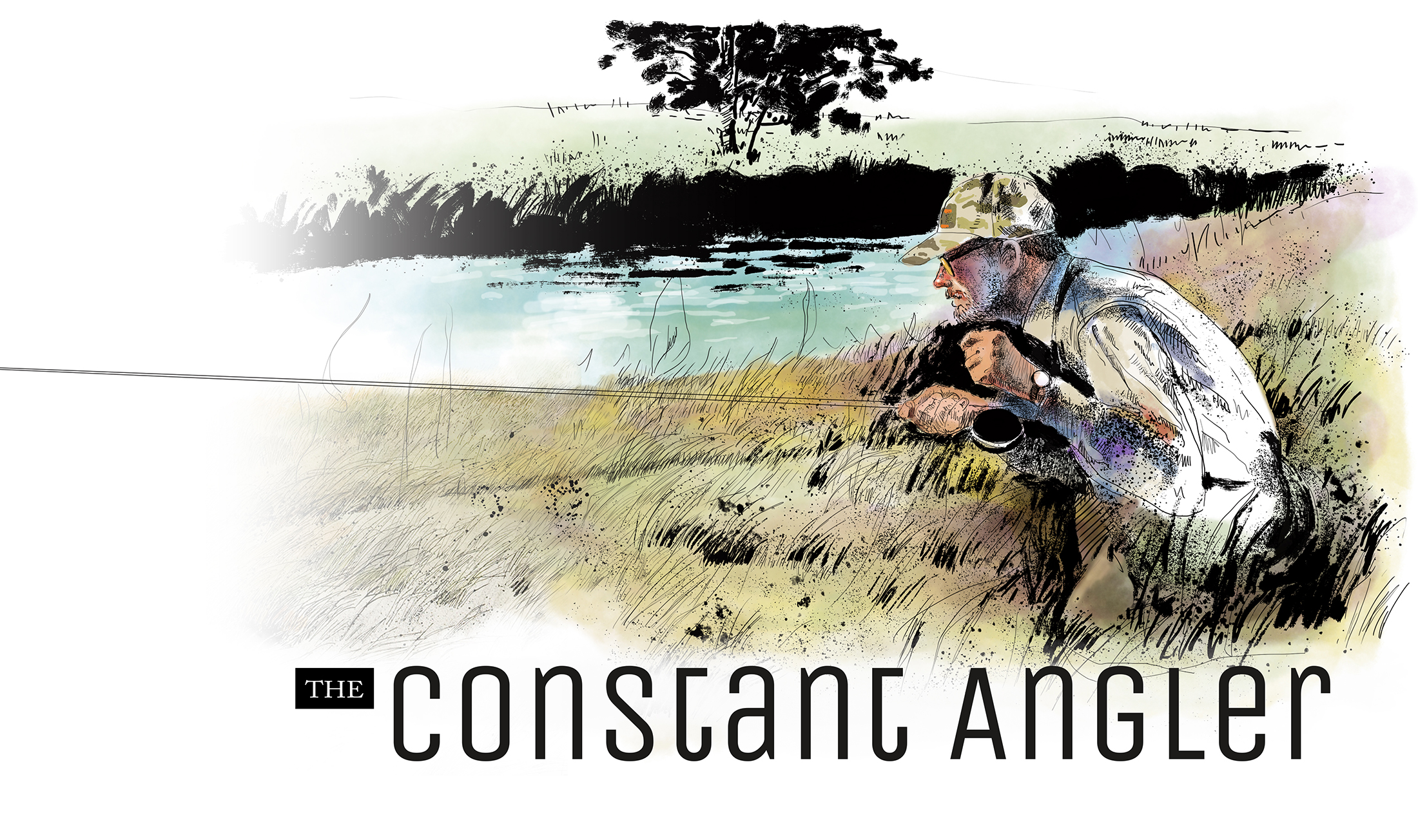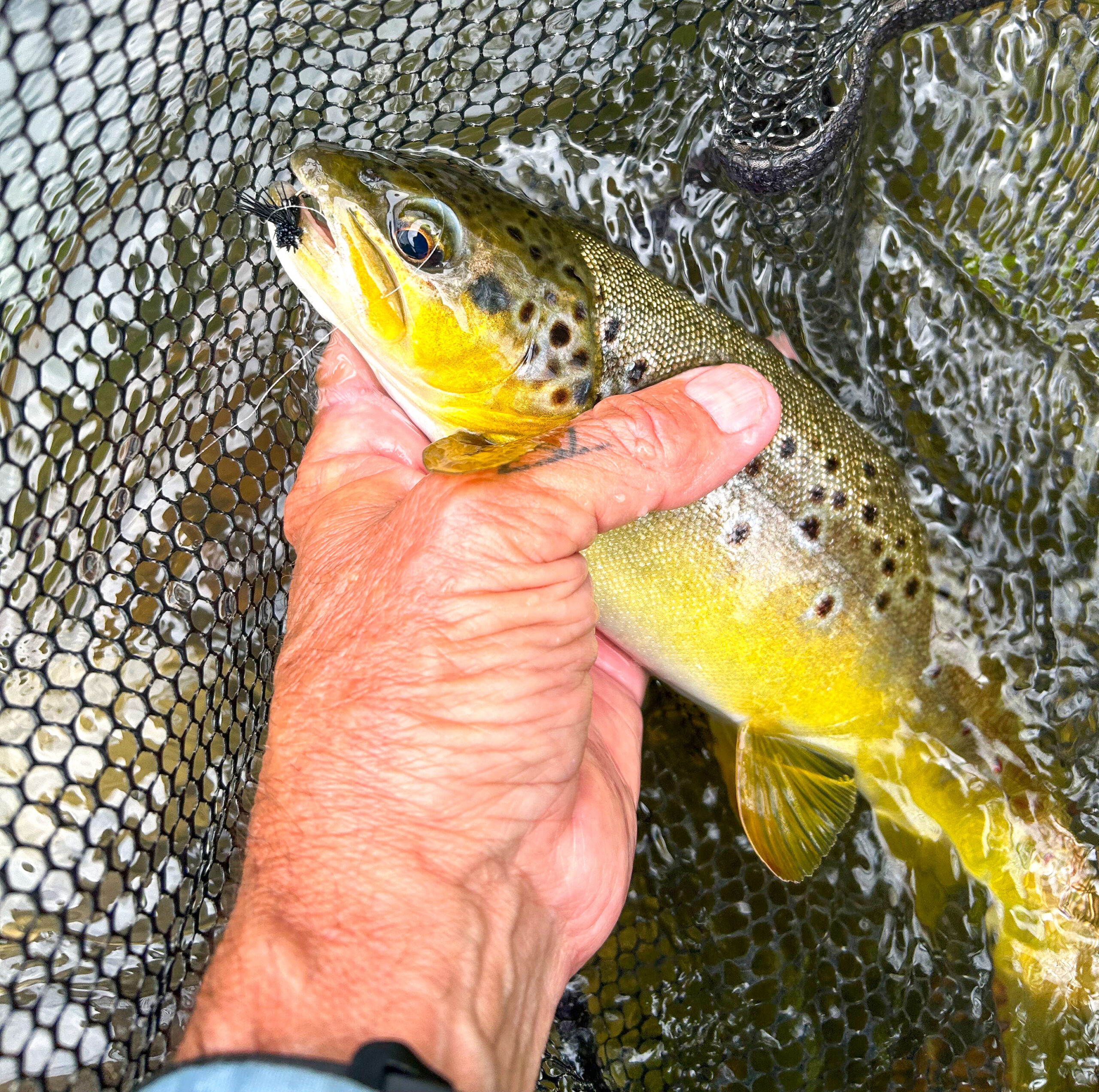Couldn’t resist a ‘Crickets on the edge
Summer is here. Sunshine, blue skies. Warmer temperatures, most days, lighter winds. As I start this post, June 23rd, we’re at the end of a three-day heat wave that reminds me of time spent in Key West, Florida. Most major hatches have been exhausted. Smallmouth Bass will be targeted in the days and weeks to come. However, trout never wander too far from the forefront of my brain. Stream temps will now dictate when I fish, if I fish. My fly box will go through a major transition. The lack of hatches actually simplifies my fly selection. Instead of small windows of feeding fish to concentrated hatches, that window is now wide open. My feet move slower, my search more intense, looking for a sip here, a sip there. Although I’ve spent a little time tossing ants and beetles, the terrestrial parade begins now.
There are many different terrestrial patterns one could choose from, but I’m going to briefly discuss what I, and many others, consider to be the basic three and one more I always carry. The Ant, Grasshopper, Beetle, and Cricket. Actually, a creative fly tyer could create one pattern that imitates both the beetle and cricket (e.g. Tom Wendelburg pattern, pg.114 of his book), thus maintaining the basic three.
Ants: Black, reddish/brown, standard, winged, wet, size #10-#22. I usually start with a #16 black, winged ant when fish are feeding along the edges. That same pattern in its smallest size is a must if you ever catch a flying ant fall. It’s absolutely the biggest feeding frenzy I have ever witnessed. I swear, every trout in the stream is up and feeding. Unfortunately, in 45 years of fishing, I’ve only hit it right a handful of times. The wet ant is your standard ant pattern with a bead as the front body segment. There are two situations in which I primarily fish this pattern. The first is if I can be on a stream after a summer shower. Many terrestrial insects can get washed into the stream, and the fish are looking for them. Fished upstream like a nymph or swung down and across often produces. The second method I employ is to hang it 8-10” below a hopper. I’ve often had great success, mid-mornings, on hopper days, if the water and air temps are slow to warm. The splat of the hopper will bring the fish to the table, but the ant will make them eat. I’ve had days where the wet ant is so productive that by mid-afternoon, I clip off the hopper and just fish the ant.
Beetles: Regardless of the pattern tied, it’s hard to beat the combination of black shell, black hackle, and peacock body. Typically, I carry patterns in the #12 through #16 range. To be honest, I don’t think the fish are that picky. I tend to use this pattern when no feeders are to be found and I need that little extra plunk as I fish the edges. Currently, it’s the only foam trout pattern I tie, and that will probably change by next season. Don’t get me wrong, I enjoy tying with foam, I love the way it looks and the way the fish respond to it. I just don’t like the hooking percentage when fished to the average size fish that most of us pursue in the Driftless. I’ve done three years of field testing, foam versus other shell materials, and this is MY opinion. I could be right or wrong, but I’m sticking to my guns. (Perhaps a deeper dive in another post at another time). For years, I used the Crowe beetle with good success, but being fragile, I would go through many on a good day of fishing. Decades ago, I fished a beetle with a black quill fiber shell. While it worked great, greased and floating on the surface, I think it worked even better when allowed to sink below the surface film. Many days it was spooky good, and that’s probably the direction I’m heading.
Grasshoppers/Crickets: Over the years, I have tied and tried many different patterns, but I always come back to the Letort hopper and Letort cricket. Tied in sizes #8 through #16, 2XL, and in different body colors, it covers all stages of hopper growth and, in the smaller sizes, also makes a fine caddis imitation. What I like most about this pattern is its simplicity and how it sits in the surface film. I have no doubt it increases my hooking percentage. Occasionally, I will add some rubber legs for added attraction, but most of the time tie it as designed.
The cricket, although not used nearly as often as hoppers, still has its moments to shine. Low light conditions, cloudy afternoons and late in the evenings, when hopper activity is slow, are prime times. The other times I reach for a cricket is when I figure the fish have seen, for several weeks, a steady parade of hopper imitations, and showing the fish something different can put the odds in your favor.
Summer is upon us. Ninety-five percent of my fishing will now be on the surface. I once told a friend that terrestrial fishing, to me, is a bit like streamer fishing, just on the surface. Much of what I do is basically hunting. Whether it’s looking for sippers or likely holding water, once found, most flies I throw will be to get the trout’s attention and make them react. It may be a bit slow for a few weeks, but once the hoppers appear, it will only get better. Even though this post has been about the July transition to terrestrial imitations, one should always carry a few small olive sparkle duns. Weather dictates much, and if you should be fishing on a dreary, cooler day with off and on showers, well, you just never know….


Leave a Reply